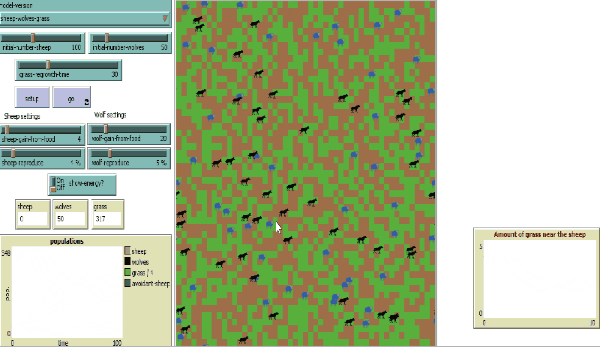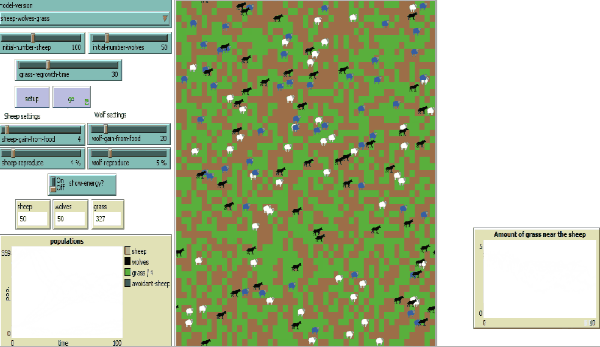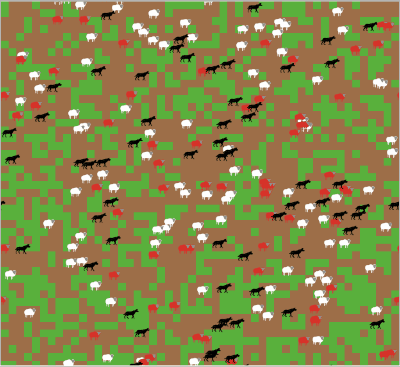Predator-prey models and Temporal Niches
Modeling predator-prey interactions, behavioural variation and temporal niche segregation

A simple wolf-sheep-grass model available in Netlogo can be modified to illustrate various principles in behavioural ecology. First, sheep and wolves moving randomly and wolves eating the sheep when they come into contact. A mean wolf population of around 50 may be sustained.

However, if sheep start avoiding the wolves (blue sheep), then the wolf population crashes (of course, wolves can chase but it is assumed that they do not in this model). If you look closely, you can see the sheep grouping together to avoid wolves.

What happens when predator-avoiding sheep (blue) and non-avoiding sheep (white) are both present in the population (behavioural variation)? Counter-intuitively, predator-avoiding sheep are outcompeted by the regular sheep. This is because blue sheep tend to find themselves in areas with less grass since they are grouped together in small spaces where grass gets depleted. I use this model to suggest predator-avoidance leading to sociality, frequency-dependence of behavioural variants on fitness and opportunity costs of predator-avoidance.

An alternative to suffering the adverse effects of inter-specific competition or predation is carving out one’s own niche. Here, I show how plasticity in timing of rest (while retreating to a corner or refuge area) can lead to temporal niche separation over a few cycles. The white sheep and black wolves are diurnal. The red sheep respond to seeing wolves by retreating earlier than usual to their refuge and accordingly beginning their foraging earlier. Repeated exposure to wolves eventually results in the red sheep becoming predominantly nocturnal.
More such models can be found on my Netlogo page - http://modelingcommons.org/account/models/3568